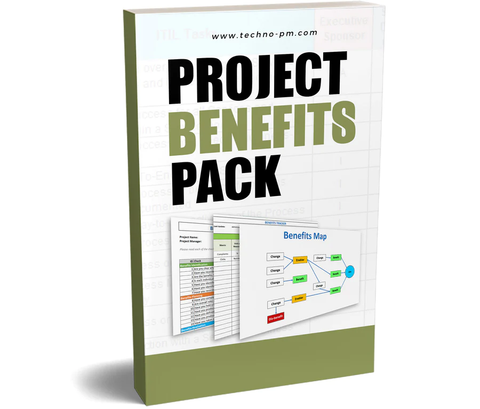Benefit Tracker Template
Wouldn’t it be great to have a single repository of all the benefits to be realized in the organization and have full visibility over when a benefit is due and what has been achieved to date and outstanding? Well, I have some good news for you today: there is an artifact you can use for exactly that!
Come On, Tell Me More!
A Benefit Tracker also referred to as Benefit Register or Benefit Repository is a list usually presented in a tabular format, which combines data coming from all the existing Benefit Profiles. This ensures that benefit reviews are taking place when they are due and that benefits are not just sold to executives but indeed monitored over time and realized in line with the targets determined as part of the Benefit Realization Plan.
I’m sure you have seen it before: a business case built with good intentions but often over-optimistic on the benefits (or their targets) to be achieved. Then, finally, the business case is approved, the benefits profiles are produced, the project is delivered, and…there is no one left to focus on benefits. Yet, if benefits are the reason why projects are initiated in the first place, then we cannot afford not to oversee their realization.
How can I have one?
The Benefit Tracker is usually put together by a central enabling function, such as a Project Management Office (PMO) or a Benefits Realization team. However, it should be noted that their responsibility is not to complete the benefits reviews themselves but to ensure that the beneficial owners are doing their part, that is, triggering the review according to the defined frequency and measuring the results obtained to date.
The information contained in a Benefit Tracker varies, but as a minimum, it should contain three parts:
1.Benefits Identification:
A brief and simple view of what characterizes the benefit as taken from the Benefit Profile. This will include the unique benefit ID, name, type, or owner, for instance.
2.Benefit Realisation Plan:
This section outlines what has been agreed as being appropriate metrics and mechanisms to realize the benefit. In addition, it contains information about the unit and frequency of measure, baseline data, target data, and the expected start and end for realization tracking.
3.Benefits Realisation (Actuals):
It is now time to compare what was planned with what has really been achieved. Therefore, this section captures the actual data (a figure, a percentage, or other depending on the unit of measure) in a time-phased way provided by the beneficial owner.
What Are The Benefits?
Some of the benefits of the Benefit Tracker (see what I did there?) include:
- Drive corrective actions:
The Benefit Tracker is relevant as a historical record for the organization. However, it is even more useful as a tool that can enable corrective actions when there is a noticeable variance between what has been planned vs. achieved. Thresholds can also be defined to determine the suitable response to such variations in this way, offering a robust management approach for escalation and resolution where feasible.
- Better accountability:
The Tracker should be made accessible and visible to all since it ultimately links to implementing the organization’s strategy. By being transparent on how benefits are realized, accountability is reinforced, and high performance can be rewarded. Benefits realization management is a project management area known for its poor accountability standards, where there are no real consequences for benefits missed. Thus, the tracker offers an opportunity to address this challenge.
- Better estimates and decisions:
Finally, by having all the data centralized, the identification of patterns is facilitated, such as in a scenario where a certain type of project or a certain business unit tends to be over-optimistic about benefits to be realized, resulting in discrepancies between benefit targets and actuals. Being aware of such situation, future projects can then benefit from more accurate estimates (for instance, by introducing an “optimism bias factor” to be discounted when the benefits realization plan is put forward), in this way enabling better decisions on which initiatives - whether projects, programs, or small pieces of work - should be selected as offering the most realistic scenario for the realization of benefits.
While compiling a Benefit Tracker can look daunting at first glance, it is actually a valuable exercise that will help validate the options considered and decisions made on the portfolio as well as strengthen the capability of the organization on how to manage benefits for the future. After all, as Winston Churchill once said, “However beautiful the strategy, you should occasionally look at the results.”




